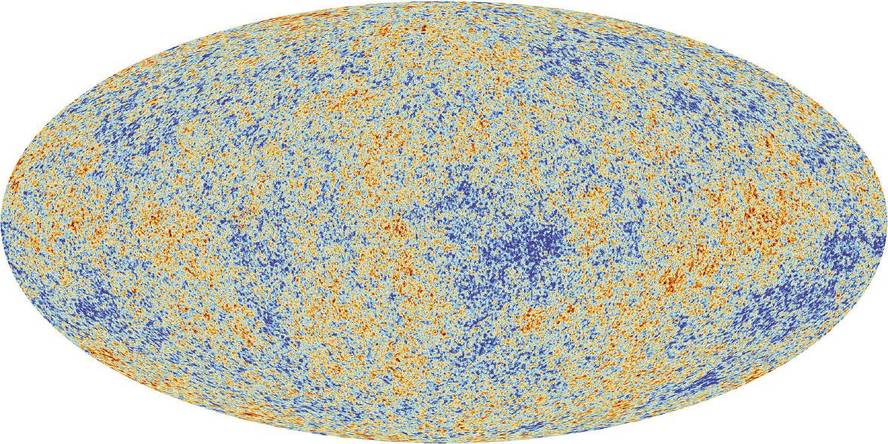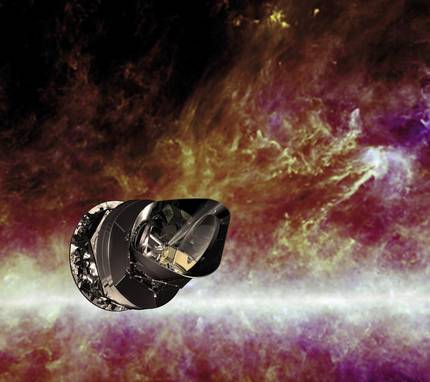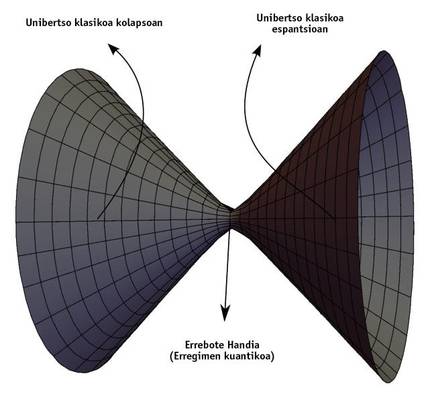Cosmic microwave background: quantum gravitation window?

Because of the fineness of the speed of light, when we look at a distant point (for example, a star), we see it in the situation that had that point in the past. In the distances we use daily this hardly affects, since the speed of light is very high. But at greater distances this effect is evident. For example, the sun is eight minutes of light from us, so if it turned off suddenly, we would still have time to do enough before staying in all the darkness. In cosmological distances, this effect can be terrible, because in the past we can see it very far! But to what extent? Can we see the moment of creation?
The rays of light that are emitted in the first moments of the universe and that now reach the earth form our horizon of particles, which for us delimits the limit of the visible universe. Keep in mind that, in principle, the whole universe can be greater than our visible universe; in fact, it can be infinite, but it doesn't have to. If ours were a universe of compact topology (like the one with the surface of a ball), the light emitted from a distant galaxy could be captured in different directions. For example, sometimes live and others turning around the entire universe. Therefore, these galaxies considered different would be several copies of the same galaxy, at different times in evolution. We can also see the solar system sometime before!
Since the age of the universe is finite (about 14 billion years), one might think that is perhaps the distance from our particle horizon, that is, 14 billion light years. But it is not so for two fundamental reasons: on the one hand, because our universe expands, so those sources that emitted light in the first moments are much farther from those mentioned, at a distance of approximately 46 billion light years; on the other hand, the ambient temperature at the beginning of the universe was so high that atoms could not form stably. The state of matter was a plasma of elementary particles with which photons had a great tendency to interact. The average free path of a photon was very short, since as soon as it began to move it was absorbed by other particles. Therefore, the early universe was opaque to light and no photon emitted at that time could reach us.
The Universe became transparent 380,000 years after the Big Bang, in the scientific language known as the “epoch of recombination” (when hydrogen atoms begin to form steadily). The cosmic microwave background (MHK) consists of photons emitted at that time. This is the oldest event we can see today and therefore the closest to the Great Explosion. In principle, as we improve technology, we may be able to detect future cosmic neutrino and gravitational wave backgrounds. These were released before the MHK photons, as both neutrinos and gravitational waves can move without major interactions along the plasma. The MHK has been investigated through sophisticated satellites. The last one to investigate has been Planck, who dedicated himself to data collection between 2009 and 2013. Thanks to this data we know that the MHK is very homogeneous and has the spectrum of an almost perfect black body, fixed at a frequency of 2.7 Kelvin. The small inhomogeneities observed in the CME are considered the seed of the large-scale structure of our universe.

As mentioned in the introduction, MHK can be one of the places that we can find in nature the effects of quantum gravitation, since the universe was very violent at first. The temperature was so high that the interaction energies between particles were much higher than we can get on the ground with any particle accelerator. However, as already indicated, the MHK photons currently shown were emitted much later than the Great Explosion, some 380,000 years later. Cosmologically, this time equals vacuum. By analogy, if we think the universe is a middle-aged person (50 years), that time would be 12 hours. However, the universe for this time was already refrigerated and the curvature of space time was relatively small, so Einstein's classical equations would be a very good approximation to describe evolution. So why do we think it is possible to detect the effects of quantum gravitation in MHK? To respond we must talk about inflation.
According to the standard model of Cosmology, during the 10-36 seconds following the Grand Explosion, the Universe suffered a huge inflation phase, which shot its size. In a short space of time, between 10 and 32 seconds, the volume of the universe multiplied by 10 78. Think for a moment about the huge size of this number: A normal room would be the size of our spectacular universe!
Alan Guth proposed for the first time an inflationary mechanism of this type, in the 1980s, to answer a series of conceptual questions about the early universe, among which is the reason for the surprising homogeneity of our universe, especially the MHK. Keep in mind that the MHK is made up of points very far from each other and that, in a model without inflation, they could not have any kind of interaction or exchange of information in the whole history of the universe, that is, not all these points would be causally connected. On the contrary, according to the theory of inflation, all these points were very close in the past and therefore causally connected. This situation allowed to initiate the exchange of information between them, reaching the thermal balance that we see today. On the other hand, inflation has been very successful and has been more useful than initially expected. In this model the values of small MHK inhomogeneities are obtained with great precision. Let's take a closer look at how this result is achieved.
In the simplest inflation models there is a particle called inflation in the early universe. As this particle slowly loses its potential energy, it caused an exponential expansion of the universe during the inflationary epoch. At the end of this process, the potential energy of inflation was still quite high. Since none of these particles is currently observed, it is considered that after inflation, in what is known as a period of overheating, all of that potential energy, current particles emerged, that is, particles of the standard model we know. However, this process is still not well understood.
It is also normally assumed that, at the beginning of inflation, quantum fluctuations of various magnitudes describing the geometry of inflation and the universe were in pure state. This quantum state of vacuum is not a simple and static object. On the contrary, it is a complex and dynamic entity. According to the uncertainty principle of Heisenberg, for a short period of time the laws of physics, such as energy conservation, can be violated. This result is well known in the common quantum theory of fields. This can happen basically because nature does not allow observation in this short period of time. Therefore, the generation of virtual particles is constant in the quantum vacuum. Under normal conditions, these particles are destroyed before being observed. But the expansion of the universe turns these virtual particles into real entities. Intuitively one might think that a virtual particle and its corresponding antiparticle (all physical characteristics equal but with electric charge of opposite sign) occurs. Before interacting with each other, the inflationary expansion of the universe takes them so far that their interaction is impossible.

These small initial quantum fluctuations, amplified during inflation, form MHK inhomogeneities we observe. Therefore, inflation works as a magnifying glass and we can experimentally observe the processes that occurred on a very small scale (therefore, with a lot of energy). In such processes, the effects of quantum gravitation can be quite significant.
A theory of quantum gravitation that describes the evolution of the homogeneous universe is the quantum cosmology of spirals (loop quantum cosmology). The predictions of this theory coincide with those of general relativity when the curvature is small. This encompasses the entire history of the universe, except for the first moments. According to general relativity, the beginning of the universe was the Great Explosion. But this is a very misleading name, since the beginning of the universe has nothing to do with an explosion, but is an improvised event in which continuous space time begins to exist. Technically, it is a point of singularity, divergent by various objects that describe the curvature of space time. Therefore, general relativity is not applicable there. Kiribil's quantum cosmology softens this singularity by taking into account the effects of quantum gravitation and, instead of the Big Bang, it is seen that at this point there is a quantum bounce, known as the Great Bounce. According to this model, the universe existed before the Great Rebound, as a collapsing classical universe. When the energy density was very high, it was introduced into the quantum regime, where the effects of quantum gravitation make the force of gravitation a repulsive. This caused the universe to bounce and began the expansion we see.
Several studies are currently being carried out to improve the understanding of this inflationary phase in the context of the quantum cosmology of spirals and to achieve their predictions regarding the inhomogeneities of the CME. Ashtekar and Sloane demonstrated that inflation is natural in this theory, i.e., very strange initiation conditions should not be selected to achieve an inflationary phase. However, there are still unanswered questions, as if evolution prior to the Great Rebound could cause some observable effect. Such an experimental observation would provide us with invaluable information about the deep quantum regime of the early universe and, therefore, the continual space-time.





